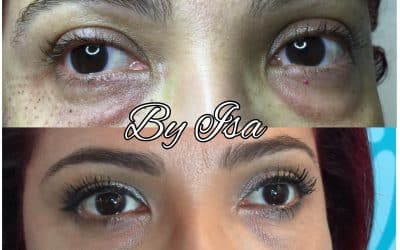The forests of Costa Rica have always been a source of life, sheltering jaguars, feeding sloths, and purifying the air. But now, the rainforest is colouring our clothes. Across the country, a growing number of artisans and eco-conscious designers are reviving the age-old tradition of botanical dyes. Using everything from indigo vines to achiote seeds and teak leaves, they’re infusing fabric with colour that’s rooted in the land itself. This isn’t just a nod to the past—it’s the future of fashion, and it’s happening in Costa Rica.

What are botanical dyes, and why are they making a comeback?
Botanical dyes are colourants made from plants, and they’re returning thanks to a global push for more sustainable fashion.
Unlike synthetic dyes, which often contain toxic chemicals and require heavy water usage, botanical dyes are biodegradable, gentle on the skin, and deeply connected to local ecosystems and culture.
Key reasons for their revival:
• Sustainability – Plant dyes don’t pollute water systems and break down naturally
• Cultural heritage – Many are rooted in pre-Columbian traditions passed down through generations
• Artisanal appeal – No two pieces dyed naturally are ever exactly the same, giving handmade textiles a unique charm
• Skin-friendly – Without synthetic chemicals, these dyes are less likely to cause allergic reactions or irritation
Which Costa Rican plants are used for natural dyes?
A handful of native and naturalised plants are at the centre of Costa Rica’s dye revival.
• Indigo (añil) – A tropical plant that creates deep blues when its leaves ferment, traditionally used across Mesoamerica
• Achiote (annatto) – The bright red-orange seeds of the achiote tree, once used by the Chorotega for body paint and textiles
• Teak leaves – Known for their earthy pinks and purples, often used by contemporary designers looking for soft, muted tones
• Teca (teak sawdust) – Surprisingly rich in tannins, this waste material produces warm browns and is often used in upcycled fabric projects
• Guava bark – Yields soft greys and pinks, and is particularly valued for silk and natural cotton
• Cochineal (though not a plant) – This tiny insect, often raised on cactus, is sometimes included for its vivid red, especially in collaborative projects across Latin America
Who is leading Costa Rica’s botanical dye movement?
A vibrant mix of rural artisans and urban fashion creatives are turning rainforest hues into wearable art.
• Selva Color – A design collective in San Isidro de El General working with indigenous communities to develop colour palettes from native flora
• Aura Textiles – A sustainable fashion brand in the Central Valley blending organic cotton with natural dyes for modern resort wear
• Bribri & Cabécar cooperatives – Reviving ancestral knowledge of dyeing techniques and rituals, often using dyes for ceremonial textiles
• Earth University partnerships – Supporting research on plant-based dye extraction to help local farmers add value to their crops
How are botanical dyes used in modern fashion?
Natural dyes are transforming how Costa Rican fashion is made, marketed, and worn.
• Slow fashion collections – Small-batch production runs that embrace imperfections and one-of-a-kind patterns
• Eco-tourism workshops – Visitors can learn the dyeing process hands-on, often dyeing their own scarves or T-shirts
• Upcycled capsule lines – Older or unused clothing is re-dyed naturally to give it a new lease on life
• Accessory makers – From silk wraps to dyed rope sandals, local makers are adding bursts of natural colour to every outfit
What are the environmental benefits of using botanical dyes?
Botanical dyes support biodiversity and reduce environmental harm.
By working with native plants and forest by-products, natural dye projects avoid the water contamination and chemical waste common in synthetic dye industries.
Environmental upsides include:
• Water conservation – Plant dyes often require less rinsing and can be reused
• Soil regeneration – Many dye plants are perennials or trees that stabilise soil and enrich ecosystems
• Circular economy – Waste products like leaves, bark, and sawdust are repurposed rather than discarded
FAQs
Q: Are botanical dyes colourfast?
A: Yes, when prepared properly with mordants like alum or tannins, plant dyes can be long-lasting and fade-resistant.
Q: Can I dye fabric at home with Costa Rican plants?
A: Absolutely. Achiote seeds, turmeric, and even avocado skins are beginner-friendly and widely available.
Q: Is this practice connected to indigenous knowledge?
A: Yes, many methods come from Bribri, Cabécar, and Chorotega traditions, now being revived and shared with respect.
Q: Where can I buy naturally dyed clothes in Costa Rica?
A: Artisanal markets, local boutiques, and brands like Aura Textiles offer garments made with natural dyes.
Q: Do natural dyes cost more?
A: Often yes, due to the labour-intensive, small-scale process—but you’re also paying for sustainability and uniqueness.






